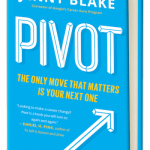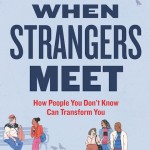Last year, when Smart Thinking was published, Art Markman, Ph.D., added “book author” to an already impressive resume: editor of the journal Cognitive Science, writer and blogger for Psychology Today, University of Texas professor of psychology and marketing, and consultant to large companies such as Procter & Gamble. With all of his accomplishments — and experience attending and speaking at conferences — in the field of cognitive psychology, you would think Markman would have a lot to say about how to design meetings that foster learning. And you’d be right. (Smart thinking!)
When I spoke to Markman over the phone last month, he had just returned from getting a haircut, during which time he had mulled over the interview questions I had emailed to him in advance — not unlike the way that he believes attendees need to approach meetings: with a prepared mindset.
In Smart Thinking, you criticize the Psychonomic Society Annual Meeting’s 15-minute-presentation format.
One of the concepts that I spend a lot of time talking about early on in the book is this idea of what I call the “Role of 3” — which is basically that you are going to remember approximately three things from any experience you have. From the standpoint of speakers, there is a tendency — when you finally have the opportunity to get up in front of this fantastic audience — to think, “I have to blow them away, by giving them everything.” Well, everything you have is going to be 12 or 15 different points. If you are trying to get something across in a short period of time, you are never going to do that effectively, or develop any of the ideas. It is really much more effective to get up in front of the audience and to give them those three things that you think are crucial, relate all of the pieces together, and really give people a single unified whole — to follow that old set of instructions, “Tell them what you are going to tell them, tell them, and tell them what you told them.”
This is particularly important, because you have to remember that your audience is sitting through a whole day of these 15-minute talks.
How else can the program format help meeting attendees absorb information?
I think it is really important to encourage people to spend a minute or two after each talk absorbing what just happened rather than launching into the next talk. The typical strategy for these kinds of meetings is you give a 15-minute talk, you have five minutes for Q&A, and while you have the Q&A going, the next speaker is getting their slides loaded up.
Then you introduce the next speaker and you move on. What that means is the audience has no opportunity to review what just happened. They are immediately launching into the next thing. The talks at conferences at best have a general theme in common, but they are not usually designed to flow seamlessly one from the next.
We need to give people the opportunity to take a step back and think about this [presentation] for a second and then get into the next one, rather than just running headlong from one thing to the next. Because I think that there is a tremendous amount of fatigue that sets in. I also think that varying up the format a little bit can be really helpful.
If you have a keynote speaker who gives a one-hour talk, that one-hour talk is not necessarily going to provide the same degree of content as four 15-minute talks or three 15-minute talks with question-and-answer periods. On the other hand, the more leisurely pace of a one-hour talk — if you have a really good and engaging speaker — does give people the opportunity to spend some time for themselves reviewing what they are hearing. While a single 15-minute talk is a brilliant way of presenting information, a whole bunch of these in a row can be numbing. A speaker who has an hour can show a little video, can pause and tell a little joke.
It’s about changing things up to give the audience a chance to shift their mindset a little bit.
What other ways can planners help participants shift their mindset?
When you are learning something, everything that is being thrown at you is also being associated with the context that you are in — which could just be a giant auditorium that the conference is being held in. After a while, you may begin to feel a very literal sense like the talks are all running together, because the context is exactly the same from talk to talk to talk.
One of the things that I recommend for people is that they actually sit in a different seat throughout the day in a conference. We are creatures of habit. If you walk into a conference and you sit in the fifth row on the right side of the room, when you first walk in at the beginning of the day, your tendency is going to be to go back to that same seat every single time for the rest of the day, because you do not really want to have to think about where you are going to sit.
But if you change up where you are sitting throughout the day, you are actually creating a different context for yourself. It is a different vantage point, things look different, they sound different.
It will actually help to make the talks feel a little bit more distinct from each other. If [planners] can switch up the [meeting] rooms or the seating arrangement, you can promote that through the environment.
Where do breaks fit in the overall learning scheme?
Having the chance to catch up with somebody in a reception and ask them a couple of questions and engage in that back and forth is really great for learning. There is a tendency to skimp on that portion of the conference, or when you do it, you just start serving alcohol and call it networking. Having some of those breaks in the middle of the day where it still feels like work time gives people the opportunity to actually ask more serious questions. It is socially awkward and probably partially socially unacceptable to be dogged about asking somebody a bunch of questions when they are holding a glass of wine.
One of the challenges of conferences is helping people implement what they’ve learned. What advice can you give?
One of the things that I recommend doing is going to the conference with sheets of paper already set up for each of the talks that you are going to hear. That just means have a slot for the title of the talk, [and] have three bullets for the three main points that you want to take away from that. If your main goal is to bring something back that is a tangible piece of information that you can use at work, don’t only write down the three key points the speaker wanted to make; try and specifically draw at least one connection from each talk to something you can use — some specific tip that you can bring back. Or have a template that you can use in a note-taking program on an iPad. Those templates provide a structure that forces you to view every talk in this way, and it provides a reminder that ultimately creates a set of habits for how to go through talks. I think that kind of scaffolding is a really great reminder of what it is that you are supposed to be doing.
Taking notes is a wonderful thing even if you never read those notes again. The act of essentially filtering all this information through your body and letting it come out your hands influences your thinking. There is this idea in psychology called “the generation effect,” which is basically the idea that information you generate yourself is better remembered than something that you just hear. Taking notes forces you to generate information.
You talk in the book about the positive value of habits. How does that fit into a conference scenario?
The purpose of going to a conference is very different from the purpose of going to work every day. One of the things you want to do in your work environment is to create habits that allow you to do all of the repetitive things that have to be done on a daily basis mindlessly so you can focus your mental energy on the things that are important. To me that is the real positive value of habits. That said, we all get into mental ruts. We think about things the same way, we use the same solutions to problems because they have been at least moderately successful for us in the past. The value of going to a conference is the prospect that you will be shaken out of some of that a little bit, and the beauty of going to a conference that is really off site is you can’t be sucked back into a meeting or some other thing. I teach classes for companies, and I often prefer to do that at a venue offsite. Because if I go to a corporate office and I teach a one-day class, invariably a third of the class disappears for half an hour because some meeting came up.
Except that on site or off, most people feel chained to their smartphone.
They call them smartphones, but they are really devices for creating dumb people. They are just these wonderful invitations to multitask. I despise multitasking. We do not really multitask, we timeshare.
Along those lines, a lot of meetings encourage people to tweet while they are in a presentation. What do you think about that?
Drives me up a wall. That real-time tweeting thing has no value except potentially for the two people who are using their tweets as a way of taking notes. I think that for everyone else in the crowd to sit there and stare at the Twitterstream as it is going by while trying to pay attention to the talk at the same time — they are not getting anything out of it. I like looking at the stream later just to see what people’s comments were. Nobody should be able to see it in the moment because they spend their time looking to see what comes up, or worse yet, looking to see if their tweet has come up yet rather than paying attention to the talk. I do not think that deepens the experience in any way. To me, the problem with tweeting during a talk is that essentially, what you are doing is creating commentary on top of something that you have not heard yet.
‘It is socially awkward to be dogged about asking somebody a bunch of questions when they are holding a glass of wine.’
The problem is if you read the Twitterstream about somebody’s talk, they either blindly parrot back a quote of someone’s that they really liked. Where sometimes they misfire is on a point that someone is going to get to in two minutes. It encourages listening locally rather than globally.
What meetings or conferences have you been to that, in your opinion, have done things really well in terms of helping people learn?
I love small meetings, workshops, 40 to 50 people, over a few days. Everybody gives a 20-minute talk with 10 minutes of question-and-answer. Lots of breaks and lots of opportunities for people to talk about stuff and to really get to know each other. What happens is you hear this talk that you think is really cool, and that is the person you track down afterwards and have an hour-long conversation with. Because the meeting is small, it is not impossible to do that. I just love those. It is hard, because they are sort of expensive in almost every way to do.
Every year, I go to the Cognitive Science Society meeting, which has about 1,500 [attendees] over four days. That is okay, but it is never my favorite meeting. Then psychology and cognitive science broadly have these huge conferences like the APA [American Psychological Association] and APS [Association for Psychological Science], where you have several thousand people over several days and all these parallel tracks. I just get lost at those.
What could an organizer do to make those large conferences feel more intimate?
That is a good question. I think it is really valuable to find ways of getting people to meet other people in the field that they do not know already. There is a tendency I find for people that go to conferences to hang out with the same people over and over again.
The nice thing about these smaller meetings is that you are thrown into a room with a group of people, only some of whom you knew before. You get to know everybody there much better. I think that if a large-meeting organizer can create smaller social events that [give] people the chance of meeting new people, that is a great thing — even if it is kind of gimmicky. I went to a conference not long ago where everyone had a little badge on and the badge lit up when you were standing near somebody who had put down similar keyword interests [on their registration form] as you had. I did not think the technology worked all that well, but it provided a convenient excuse to say hi to somebody you did not know before. That to me was the valuable piece of it. You spent three minutes saying, “Can we figure out what keyword it was that made this thing think we ought to talk to each other?” Then a conversation would happen.
What about making the program more multidisciplinary?
Yes, I guess the other thing about those small meetings that I really like is that they invariably are very multidisciplinary. Forcing people to take the problem that they are grappling with, whatever it is, and think about it from a different perspective is incredibly liberating. You do not always realize the set of assumptions that you have come to the table with when trying to solve a problem. You discover that there is somebody else that has been thinking about almost exactly the same thing that you have, only they started from a different place. The insights that they have are different and the problems that they bump into are different.
The biggest danger to me is the prospect that you will go to a conference and just talk to a whole bunch of people who already basically agree with you. It is far more comfortable to go to a meeting where there is a whole bunch of people who are exactly from your subspecialty and they are all going to talk the same language and they are all going to approach the problem in exactly the same way you are. If you go to a meeting with people who are coming at an issue from lots of different directions, you are forced to think about it from all of their different perspectives. As long as the program is well chosen and the speakers are actually smart people within their disciplines — it is a little bit painful at first, but — you end up learning a lot.
Do you think that face-to-face meetings and conferences are an effective way to learn?
Here is the thing: I love technology and I think technology provides us with all kinds of opportunities that we would not have in other ways. TEDTalks are a great chance to be exposed to someone that you might not be able to have come to a theater near you. Google chat rooms where you can get five people virtually together to have a conversation — in an era of limited budgets, it is better than nothing.
But there is a real benefit to getting a bunch of people together in the same room, because human communication has evolved for a small number of people in the same room at the same time in face-to-face communication. That is the thing we are best at. We learn less well the further you get from that. The chance to get a whole bunch of people together and really engage is better than any technology-mediated event. A well-run face-to-face meeting — there is just no substitute for that.
Book Excerpt
Every year in November, I go to the annual meeting of the Psychonomic Society. While the meeting is a great place to find out about cutting-edge work, there is a problem at this conference.
Lots of scientists want the chance to talk about their projects, and hundreds of talks are presented at this two-and-a-halfday meeting. To fit everything in, each talk is only about 15 minutes long. Now, think about it. If you had one chance to talk to your colleagues from around the world each year, and you only had 15 minutes, you might be tempted to throw in as much information as you can in that brief period. And that is what happens. The talks at this conference are dense. People try to present a lot of information in a short period of time.
This conference is full of people who focus their lives on the way that humans process information and learn new facts. And yet, all of this knowledge about how people learn seems to get thrown out the window as soon as they have the chance to talk to their colleagues about their work. Giving very little background information, they launch into a rapid-fire discussion of experiments and data. And as a result, I often have a lot of trouble remembering anything from the talks I hear at the conference. Over the years, I have adopted the strategy of standing in the hallways outside the talks and stopping my colleagues to find out what they are working on. I find that these conversations give me a lot more insight into people’s work than the formal talks themselves. What’s going on here?
Generally speaking, your memory for things that happened to you in the past is governed by the Role of 3. You are able to remember approximately three distinct things about any experience, whether that experience is a baseball game, a movie, or a poorly constructed conference talk. The quality of what you can remember depends on how well you are able to connect those three things to knowledge you have already. You create High-Quality Knowledge when you relate new information to important knowledge you already possess. Ultimately, the talks given by my colleagues would be more effective if they respected the Role of 3.
Editor’s Note: The three recommendations Markman makes for readers to help improve the quality of their memory for new events can be applied to meeting attendees.
1 Prepare. Start by doing a little preparation for any class, meeting, or presentation. Since you will most likely have at least a general idea of the content to be discussed in any given situation, you can prepare by thinking about what you are hoping to get out of it. You are most likely to be able to remember information that you connect to what you know already; thus this mental preparation helps ensure your existing knowledge will be available in your working memory.
If you are attending a meeting, talk, or event for which no information or agenda has been provided to you in advance, you should spend a little time thinking about what is most likely to be discussed. Prepare yourself by thinking about the issues you hope are raised and think about how that information might relate to other projects or ideas you are working on.
2 Pay attention. Thinking is hard work. This might seem obvious, but if you look around the room at many meetings, you will find yourself faceto- face with one of the true demons of modern life: multitasking. You cannot maximize the quality of the new knowledge you are taking in if you do not give yourself every opportunity to pay attention.
3 Review. In the few minutes after a meeting, take a few seconds or minutes to write down the main points … or rehearse them in your head.
Editor’s Note: Likewise, Markman has three suggestions for improving what people remember about you — solid advice for speakers.
1 Start all of your presentations with an advance organizer. You want to provide information to others to give them a sense of what is to come. A sentence about each of the main topics is enough to get everyone thinking.
Giving people information about what will be coming in your presentation gives them the opportunity to activate the knowledge they already have in preparation for learning. The advance organizer also focuses your presentation on a small number of items.
2 During a presentation, stay focused primarily on your three main points. The more digressions and other interesting facts you add, the more likely it is that people will remember something other than the essential message you are hoping to convey. To help people learn new information, find ways to help them connect this content to their existing knowledge. … Encourage people to think of ways in which they would be able to use the information you are presenting. Then, when they encounter those usage situations later, they will be more likely to remember what you told them.
3 At the end of every presentation, summarize your three key points. The summary ensures that you have the chance to emphasize the elements you believe were most important for people to know.
Excerpted and reprinted from Smart Thinking by Art Markman by arrangement with Perigee, a member of Penguin Group (USA) Inc., copyright © 2012 by Art Markman. Now available in paperback.
More Resources
For more on Art Markman, Ph.D., and Smart Thinking, visit smartthinkingbook.com.




